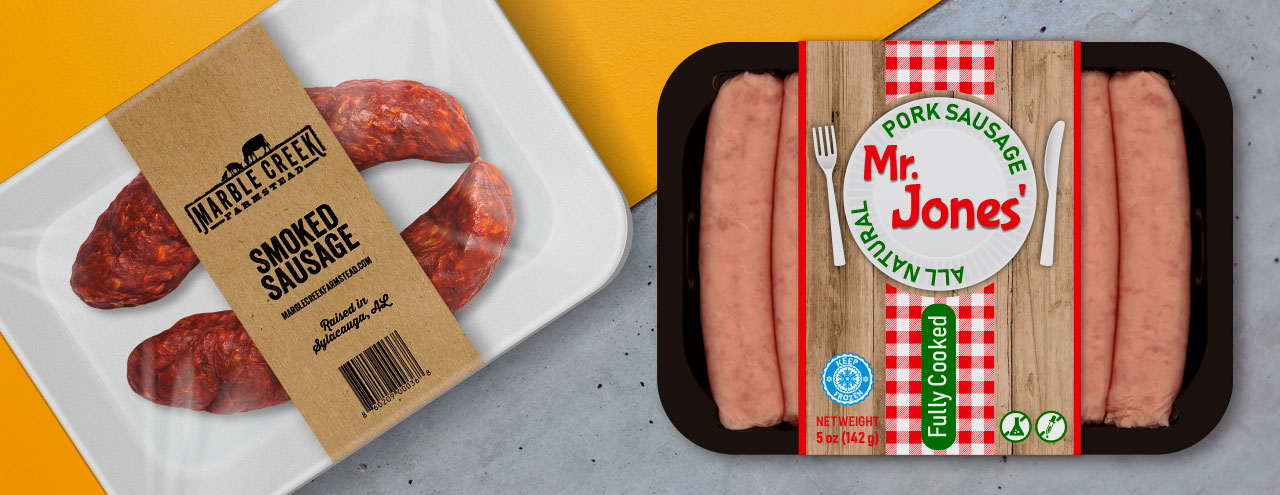There are many different types of sausages: uncooked fresh, uncooked smoked, cooked and ready-to-eat, dry or semi-dry, made from red meat, poultry, a combination of the two, etc. As is the case with all types of meat, sausages also need to be made, stored and handled according to strict regulations in order to be safe for consumption.
Sausage safety regulations are inspected and controlled by the USDA’s Food Safety and Inspection Service (FSIS), or a particular state’s health or agricultural department, if the product is made and sold only within that state. However, meat producers’ job is not only to make sure their product is safe and made from quality ingredients, but also to label the sausage product in a way that meets labeling requirements and helps consumers find out everything they need to know about that particular food item. Though food labeling can be very challenging, here are some general guidelines about what sausage labels need to include:
- product name (for example: sausage, hot dog, bratwurst, etc.)
- ingredients list
- nutrition facts label (if the sausage is not made and packaged in a local store)
- the manufacturer, packer or distributor’s name and location
- contents net quantity statement
- inspection legend and USDA establishment number
- safe-handling statement, for perishable sausages (i.e. “Keep Refrigerated”)
- safe-handling instructions, for all sausages that are not ready to eat
In many cases the label will also include information about the latest “sell by” date, though the manufacturer is not obligated to include it.
Additional Requirements for Fresh, Dry and Not-Ready-to-Eat Sausages
Besides basic information, sausage labels need to include some additional statements depending on the state of the product. For example, fresh sausages belong to the perishables category, so consumers need to know that they should be kept frozen or refrigerated and cooked before eating. If labeled “fresh pork sausages”, they can’t contain more than 50% of fat or any pork byproducts. There are similar requirements for fresh beef sausages, whole hog sausages, etc.
Labels for sausages that are not ready to eat, either uncooked or partially cooked, should clearly instruct consumers that the product needs to be fully cooked to destroy any pathogens.
Dry and semi-dry sausages can be fermented, cultured with lactic acid, smoked, cooked or uncooked. The process of drying sausages is usually a very secure way to destroy pathogenic bacteria. Some dry sausages are ready to eat and do not need to be frozen or refrigerated, so they don’t need to be labeled with safe-handling statements. For information on how long you can freeze perishable sausages, take a look at this infographic.
Who to Contact When You Need Sausage Labels?
When you’re finally ready to order labels that will accurately inform consumers about your sausage product, you’ll want those labels to reflect your professionalism and your brand. At FreezerLabels.net, we have experience designing and printing stickers for food products, especially labels for frozen food. Lacking information, food producers will choose less costly all-temp labels for their food product and realize that it’s a poor choice for products that will most probably be kept in the freezer. We advise our customers to choose freezer grade labels that will not peel from the product or discredit the product/producer in any other way. We can also help you choose adequate label size, design and printing method that will be the best solution for your product needs and your budget.


5 thoughts on “Sausage Labels”
Comments are closed.